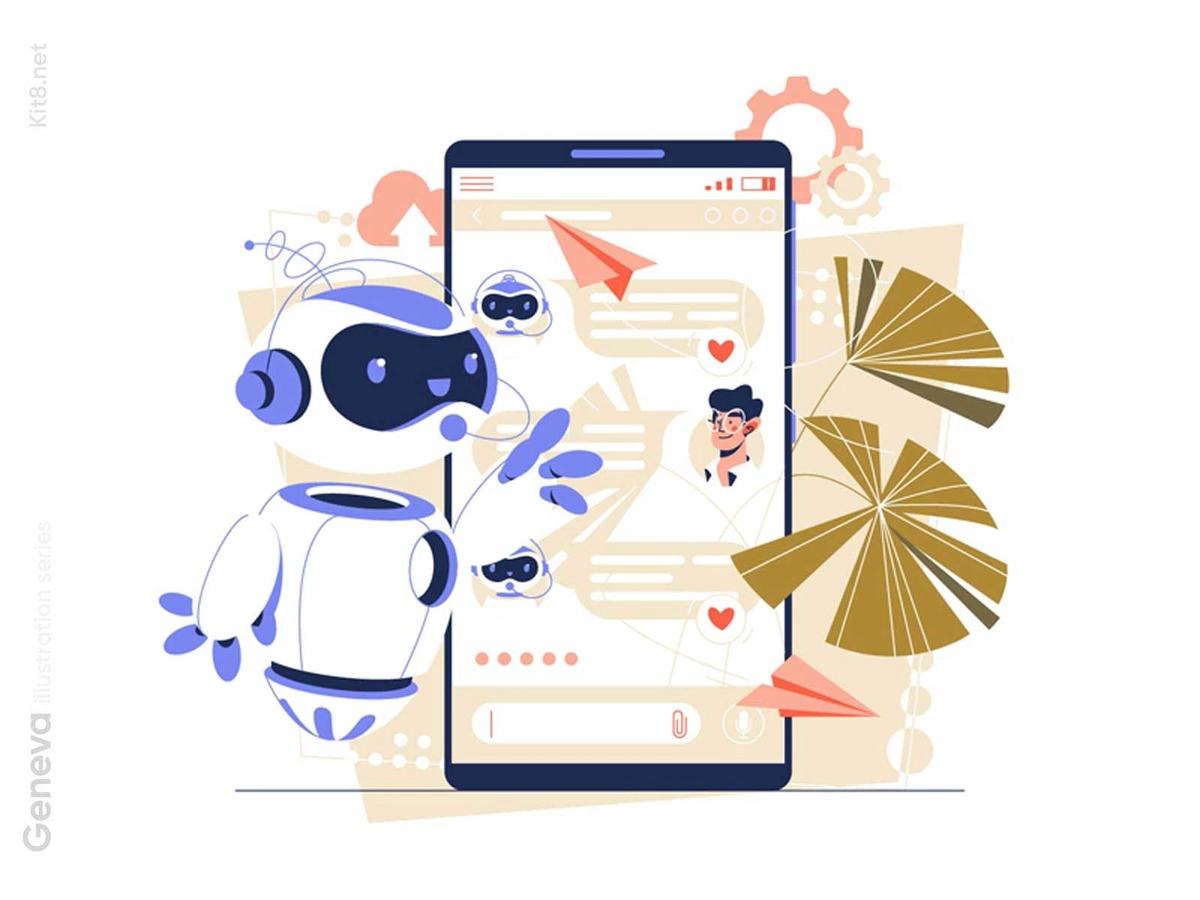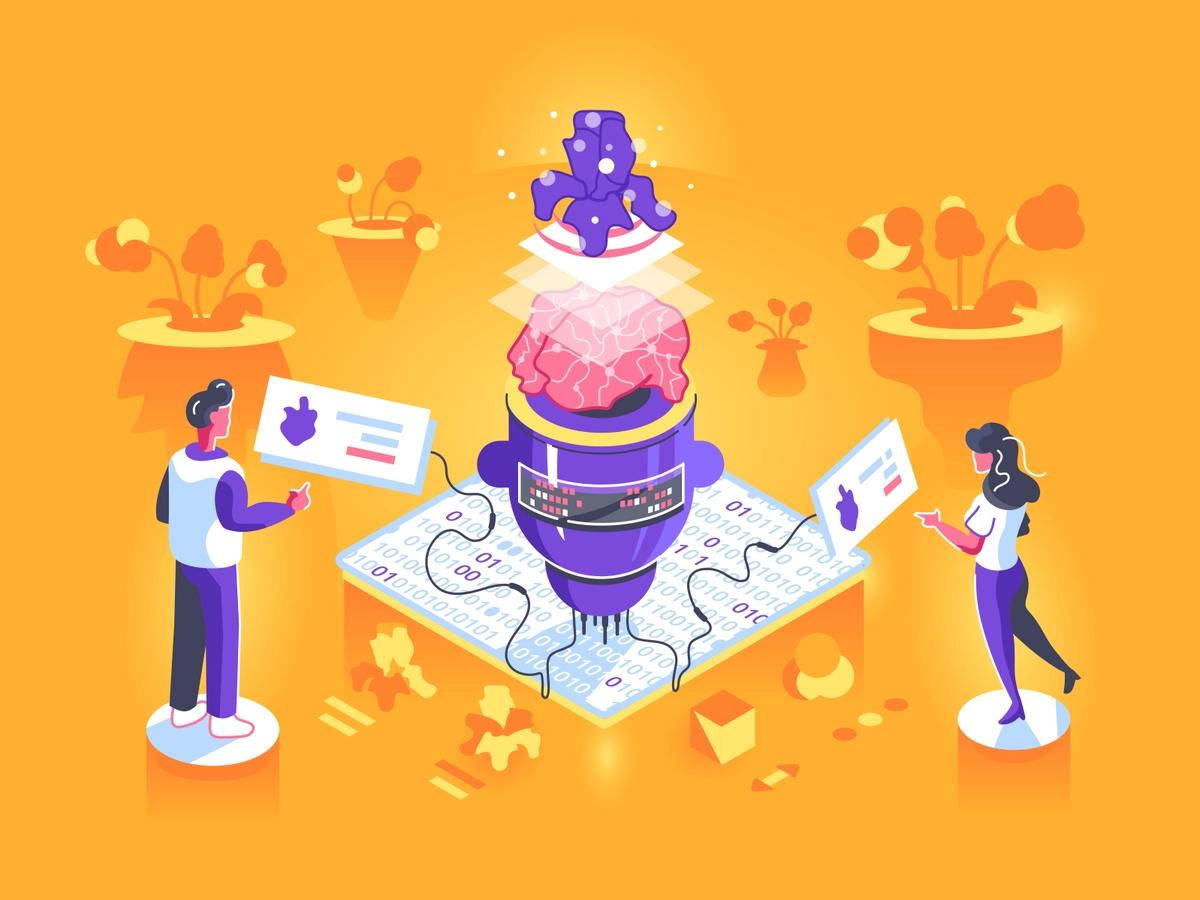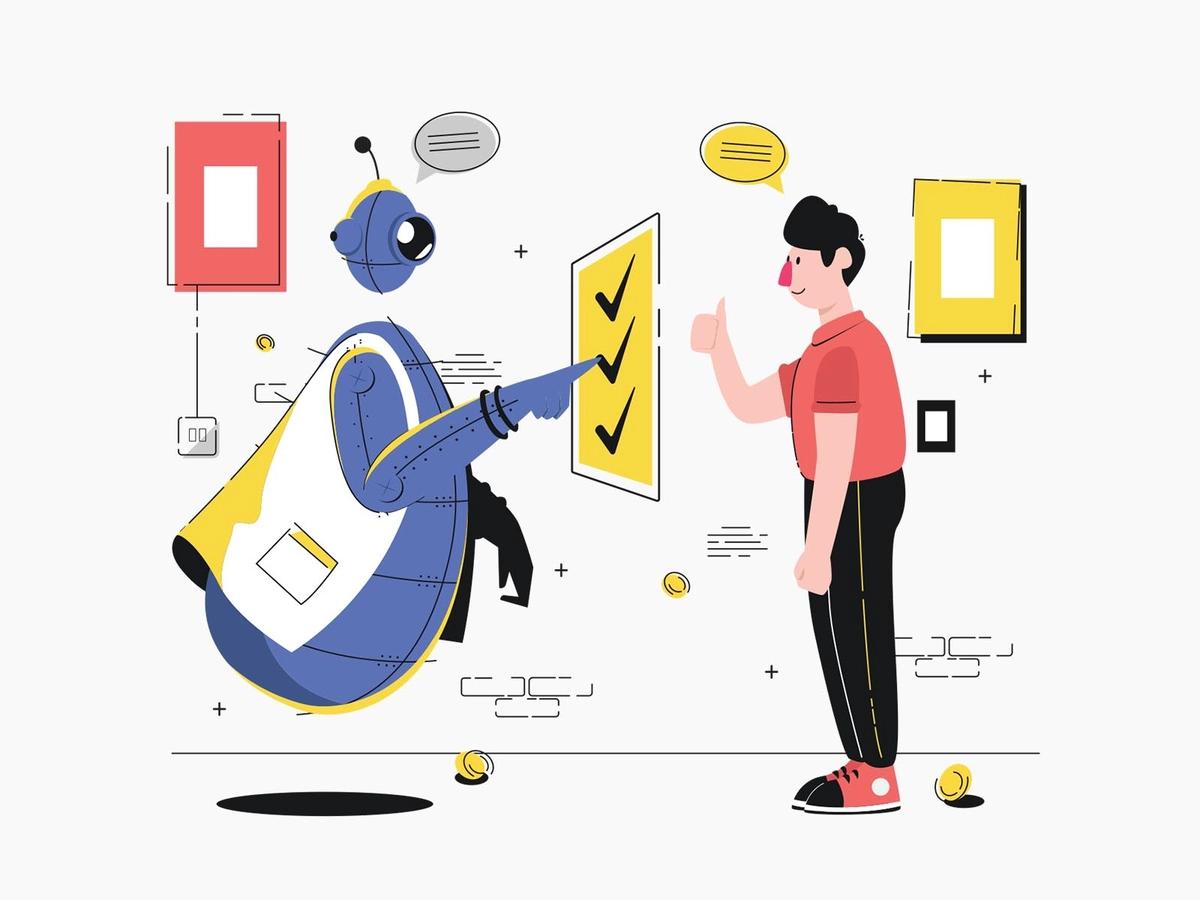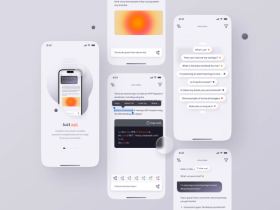Top 5 Best Practices for Integrating ChatGPT in Your App
Published: November 8, 2023
12 min read
In this article, you'll learn:
1
🔎 Practice #1. Define the Purpose of the Chatbot
2
🎯 Practice #2. Choose the Right Platform and Tools for Integration
3
🏃♀️ Practice #4. Train the Chatbot
4
✍️ Practice #5. Test and Refine the Chatbot
5
Takeaways
Integrating ChatGPT into your app enhances the user experience. It's possible thanks to chat's ability to provide an intuitive conversational interface. ChatGPT is a great tool to help your app understand user inputs. As a result, chatbots provide accurate and personalized responses, so it is easier for users to complete the tasks within the app.
ChatGPT is a cutting-edge conversational AI technology that uses Natural Language Processing (NLP). NLP is used to generate human-like responses to user inputs. Developed by OpenAI, ChatGPT can understand context, and provide accurate information. Chat also engages you in natural and fluid conversations.
In this article, we will explore the top 5 best practices for integrating ChatGPT into your app. From data preprocessing techniques to model fine-tuning strategies and user testing, we will cover all the key aspects of building a high-performing chatbot that provides value to your users. Additionally, you'll get various use cases for chatbots in apps. And, finally, we’ll show you all the fun behind using chatbots for your app! Stay tuned! :)

Customer service can be a challenge, but chatbots can help. Check out our latest article to learn how to integrate them into your strategy and enhance your support team's effectiveness. (image by Kit8)
🔎 Practice #1. Define the Purpose of the Chatbot
The first step you have to take to integrate ChatGPT into your app is to understand its purpose. As it’s easier said than done, we prepared little instruction for you.
- Identify the target audience and their needs
Consider the demographics of your audience, such as their age, gender, and occupation, as well as their goals and pain points. By understanding your audience, you can design a chatbot that provides value to them and helps them achieve their goals.
-
Determine the goals and objectives of the chatbot
The next step is to determine the goals and objectives of the chatbot. What do you want the chatbot to achieve? Is it to provide customer support, help users navigate the app, or offer personalized recommendations? Make a list of the key goals and objectives for the chatbot.
-
Develop a plan for how the chatbot will provide value to the users
Consider how the chatbot can help users save time, make better decisions, or provide a more personalized experience. Determine the types of interactions the chatbot will have with users, and how it will respond to different scenarios, for example, to rude behavior.
A well-defined chatbot purpose can help you build a more effective and engaging app, enhancing the user experience and driving user satisfaction.

Don't let your chatbot flounder without direction. Our latest article explains why defining its purpose is critical and how to do it in a way that works for your business. (image by Alaina Johnson)
Research and analyze similar chatbots in the market to get inspiration
Before integrating ChatGPT into your app, it's important to do some research on similar chatbots that are currently available in the market. This can help you identify best practices and avoid common pitfalls when it comes to chatbot design and implementation.
Start by identifying competitors or other companies in your industry that offer chatbot solutions. Look for examples of chatbots that are similar to what you want to achieve with ChatGPT, and analyze their functionality, user experience, and overall design.
Pay attention to how the chatbot interacts with users, the types of questions it can answer, and any limitations or challenges that users may encounter. You can also look for user reviews or feedback on these chatbots to get a better understanding of what works well and what could be improved.
Once you have a good understanding of what's already out there, you can start to brainstorm ways to make your ChatGPT integration stand out from the crowd.
Document the key features and functionality of the chatbot
Start by defining the core functionality of your chatbot.
- What types of questions will it be able to answer?
- Will it be able to provide personalized recommendations or suggestions based on user input?
- Will it be able to execute specific tasks, such as booking appointments or placing orders?
Next, consider how you want the chatbot to interact with users.
- Will it use natural language processing to understand and respond to user queries?
- Will it offer multiple response options, such as buttons or menus, to guide users through different paths?
Consider creating a detailed specification document that outlines the chatbot's capabilities, including any technical requirements or constraints. This can serve as a valuable reference point throughout the development process and help ensure that the final product meets your expectations.
By documenting the key features and functionality of your chatbot, you can help ensure successful integration with your app and provide a more seamless user experience for your customers.
🎯 Practice #2. Choose the Right Platform and Tools for Integration
Research available chatbot platforms and tools
Chatbots are becoming increasingly popular, and there are many chatbot platforms and tools available on the market. Each platform has its own benefits and drawbacks, and choosing the right one for your app can be a daunting task. We want to compare the benefits and drawbacks of some popular chatbot platforms and tools for you.
It’s a popular chatbot platform that allows you to create chatbots without any coding. It is easy to use and offers a wide range of templates, integrations, and analytics. However, it has limited customization options, and it can be difficult to scale your bot if you have a large audience.
Dialogflow is a natural language processing platform that allows you to create chatbots that can understand and respond to natural language inputs. It has powerful AI capabilities and can be integrated with Google Assistant, Facebook Messenger, and other platforms. However, it can be complex to set up, and it requires some coding knowledge.
Botpress is an open-source chatbot platform that allows you to create and deploy chatbots quickly and easily. It has a drag-and-drop interface, and it offers many integrations and customization options. However, it requires some coding knowledge, and it may not be suitable for non-technical users.
Tars is a chatbot platform that allows you to create chatbots for lead generation, customer support, and other purposes. It offers a user-friendly interface, and it can be integrated with many platforms, including Facebook Messenger, WhatsApp, and Slack. However, it has limited customization options, and it can be expensive for larger teams.

Integration can be tricky, but choosing the right platform and tools can make it easier. (image by Matt Chalwell)
Develop a chatbot persona to enhance the user experience
Integrating ChatGPT, a language model developed by OpenAI, into your app can enhance its conversational capabilities. However, integrating ChatGPT requires certain tools and APIs that may vary based on your language, platform, and frameworks.
- Consider the language, platform, and frameworks you are using
ChatGPT provides APIs for different programming languages, including Python, Java, Ruby, and Node.js. Additionally, ChatGPT can be integrated into various platforms, such as web, mobile, and desktop applications. If you're interested in deeper customization, you might explore how to build your own LLM.
- Evaluate the available tools and choose the best fit for your project
The followings are some tools and APIs that can help you integrate ChatGPT into your app:
The OpenAI API provides access to various language models, including ChatGPT. It offers easy integration and supports various programming languages and platforms. However, it requires an API key, which may have usage limits and pricing based on usage.
It’s a popular open-source library for natural language processing. It provides pre-trained models, including ChatGPT, and offers easy integration with various programming languages and frameworks. Additionally, it has a user-friendly interface and a large community of developers.
It’s a JavaScript library for machine learning that allows you to run machine learning models, including ChatGPT, directly in the browser. It may require some knowledge of JavaScript and machine learning to use and customize the models.
Now, you need to choose the best fit for your project based on your requirements, resources, and expertise. It is also essential to consider the performance, scalability, and security of your integration to provide the best user experience. By integrating ChatGPT into your app, you can enhance its conversational capabilities and provide more personalized user experiences.
🗣 Practice #3. Design the Conversation Flow
Plan and design the conversation flow of the chatbot
The first step is to map out the user journey and expected interactions. This involves identifying the user's needs and expectations and determining the steps the chatbot needs to take to meet them. It is also essential to create a clear and logical flow that guides the user through the conversation and provides relevant and helpful responses.
Next, determine the tone, language, and personality of the chatbot. The tone and language should align with your app's brand and be appropriate for your target audience. For example, a chatbot for a financial app may use a more formal and professional tone, while a chatbot for a food delivery app may use a more casual and friendly tone.
Develop a chatbot persona to enhance the user experience
This step is essential for creating a more engaging and memorable interaction. The persona should reflect the tone, language, and personality of the chatbot and align with your app's brand. This involves giving the chatbot a name, personality, and tone consistent and appealing to your target audience.
Additionally, you need to determine the type of conversations the chatbot will have with users. This includes identifying the topics and questions the chatbot can handle and providing relevant and helpful responses. It is also essential to design the conversation flow to include fallback options and error handling to ensure a smooth and seamless user experience.
Ensure the conversation flow and persona align with the app's purpose and brand
This involves reviewing the design and testing the chatbot to ensure that it meets your app's goals and provides a consistent and high-quality user experience. You may need to iterate and refine the design based on user feedback and usage data to improve the chatbot's effectiveness and engagement.
Designing the conversation flow and persona of a chatbot requires careful planning and consideration to align with your app's purpose and brand.
Start integrating ChatGPT today and see the difference!
Contact Us
🏃♀️ Practice #4. Train the Chatbot
Training involves collecting and preprocessing data, selecting appropriate techniques, and regularly updating and refining the model to improve its performance.
Collect and preprocess data for training the chatbot
The first step in training a chatbot is to identify and collect relevant datasets. These datasets should be representative of the domain and intended use of the chatbot. Once the datasets are collected, they need to be cleaned, preprocessed, and formatted to ensure they are in a suitable format for training.

Without the right training data, your chatbot won't be effective. (image by serj marco)
This process may involve removing irrelevant data, tokenizing text, and converting data to a numerical format.
Train the chatbot using appropriate techniques
Once the data is preprocessed, the next step is to train the chatbot using appropriate techniques. This typically involves fine-tuning a pre-trained ChatGPT model on the specific domain of the app. Fine-tuning involves retraining the model on a smaller dataset specific to the app's domain, enabling the chatbot to learn from the app's specific language and context.
The fine-tuning process may involve adjusting hyperparameters, optimizing the learning rate, and selecting the appropriate loss function.
After the initial training, the model needs to be tested and refined until it meets the app's needs. This may involve testing the model on a validation dataset, analyzing performance metrics, and iterating on the model based on the results. The refinement process may involve adjusting the architecture of the model, increasing or decreasing the complexity, or changing the training process.
Ensure the chatbot is up to date and regularly retrained to improve its performance
This involves monitoring the chatbot's performance metrics, evaluating user feedback, and updating the model as necessary. Regular retraining may involve updating the dataset with new examples, refining the preprocessing and formatting techniques, or fine-tuning the model on new data.
✍️ Practice #5. Test and Refine the Chatbot
Testing the chatbot with real users can help identify potential issues and areas for improvement. Also, collecting feedback and analytics can provide valuable insights into how the chatbot is performing.
To test the chatbot with real users, run user tests that simulate typical user interactions with the bot. This can involve asking users to complete specific tasks or scenarios or simply allowing them to interact with the bot in a natural way. The goal is to observe how users interact with the bot and identify any areas where they may be struggling or experiencing frustration.
Collecting feedback and analytics is also important to monitor the chatbot's performance over time. Feedback can be gathered through surveys or other forms of direct user feedback, while analytics can provide insights into usage patterns, engagement rates, and other metrics that indicate the chatbot's effectiveness.
Based on user feedback and data, the chatbot can be refined to improve its performance. This may involve continuously updating and improving the conversation flow and persona to better align with user needs and preferences. It may also involve implementing changes to the training data and retraining the model as necessary to improve the accuracy of the chatbot's responses.
Once the chatbot has been refined, it is important to deploy it and monitor its performance in production. This involves ongoing monitoring of usage patterns and analytics, as well as periodic testing with real users. Of course, those steps are needed to ensure that the chatbot is still meeting user needs and providing a positive user experience.

Make your chatbot smarter and more effective with proper training techniques. (image by Pixel True)
Adopt these best practices for a smooth integration of ChatGPT and consider expanding your AI integration by learning how to integrate AI into an app.
Takeaways
In conclusion, integrating ChatGPT into your app can bring significant benefits to both users and developers. Following best practices throughout the process, including planning and designing the conversation flow, collecting and preprocessing data, and testing and refining the chatbot, can help ensure its success.
By incorporating a well-designed chatbot persona, regularly retraining the model, and monitoring its performance, you can provide a seamless and personalized user experience.
With ChatGPT's advanced language capabilities and ability to handle complex conversations, it has the potential to transform the way users interact with your app.
Overall, implementing ChatGPT is a valuable investment for any app developer looking to enhance their user experience and stay ahead in the rapidly evolving world of artificial intelligence.
Our clients say
![Stormotion client Max Scheidlock, Product Manager from [object Object]](/static/33294af91c38256bcd5a780ddc41861a/b0e74/max.png)
They understand what it takes to be a great service provider, prioritizing our success over money. I think their approach to addressing ambiguity is their biggest strength. It definitely sets them apart from other remote developers.
Max Scheidlock, Product Manager
HUMANOO
Was it helpful?
Read also

